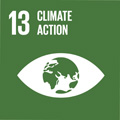- Docente: Leonardo Testi
- Credits: 6
- SSD: FIS/06
- Language: Italian
- Moduli: Leonardo Testi (Modulo 1) Laura Sandra Leo (Modulo 2)
- Teaching Mode: Traditional lectures (Modulo 1) Traditional lectures (Modulo 2)
- Campus: Bologna
- Corso: First cycle degree programme (L) in Astronomy (cod. 8004)
-
from Feb 20, 2025 to May 29, 2025
Learning outcomes
At the end of the course the Student has a basic knowledge of the fundamentals of Planetary Sciences and is able to analyze the planetary atmospheres as physical systems. The Student learns the phenomenology and equations governing the fundamental physical processes occurring in the planetary atmospheres in the Solar System. The Student is able to interpret simple models of greenhouse effect and to link climatic patterns with orbital parameters of Planets.
Course contents
1) Introduction What is a planet and why a planet is round and smooth. The planets and minor bodies of the solar system. The Solar System in the context of exoplanetary systems. Formation of the Solar System. Comets, meteorites and origins of the Moon. main properties of the Sun and their evolution, in the context of the interaction with the planets. Solar constant, insolation. Radiative equilibrium of a planet.
2) Main characteristics of the Earth and Planets
atmosphere Composition and chemical evolution:
secondary atmosphere. Mass escape mechanisms (Jeans Escape). Mean
thermal structure. The Stratosphere and the role of the Ozone
layer. Thermal vertical profile of internal and external planets
and Titan.
3) Thermodynamics of the Atmosphere Air
parcel concept. The gas laws applied to the real atmospheres.
Hydrostatic balance and hypsometric equation. Dry air: adiabatic
processes and lapse rate. Diabatic processes and diabatic
stratification.
4) Hydrostatic Stability Buoyancy force and
vertical velocities. Static stability and the Brunt Vaisala
frequency. Categories of static stability for dry air and
convection. Auto-convective gradient.
5) Water Vapour and Condensed Phases in the
Atmosphere Water vapour saturation pressure and phase
changes. Adiabatic lapse rate for saturated air (pseudo-adiabats).
Condensed states in atmospheric planets: clouds and hazes.
6) Radiative Transfer and greenhouse effect
models Electromagnetic spectrum. Solid angle and main
radiometric quantities. Black body radiance and its fundamental
laws. Kirchhoff's law. The differential equation of the
radiative transfer for absorbing and emitting
processes. Schwarzschild's solution for a plane parallel
atmosphere. Greenhouse 1-d
model. Greenhouse parameter. The Venus case and the Sandstrom
theorem. Radiative equilibrium in a plane parallel and grey
atmosphere. Runaway green-house effect (Venus, Earth and
Mars). Time radiative constants. Global energy budgets for multiple planets.
7) Atmospheric Dynamics Fundamental fluid dynamics. Eulerian and lagrangian formalism. Equation of motion in a rotating reference frame. Scale analysis of the momentum conservation equation: geostrphic balance, cyclosptrophic balance, and gradient wind. Thermal wind and its applicability. Zonal and meridian circulation. Hadley Cell. Characteristics and peculiarities of the atmospheric dynamic of Jovian planets, Venus, Mars, Earth, and Titan: observations and simplified theoretical models.
Readings/Bibliography
Lissauer & de Pater: Fundamental Planetary Science, Cambridge University Press
T. Maestri. Planetary Atmospheres. Reperibile direttamente dal docente.
Sanchez-Lavega, Agustin. An Introduction to Planetary Atmospheres, Taylor & Francis Group.
F.W. Taylor: Planetary atmospheres. Oxford
Introduction to Dynamic Meteorology, J. R. Holton, Academic Press
Teaching methods
The teacher will cover the course program (for a total of 6 ects) by discussing material shown with the video projector and with the help of blackboard. Simple problems and questionnaires will be solved and discussed during the classes to facilitate the understanding
of the most theoretical part of the course. It is foreseen the
discussion of some of the most recent scientific outcomes concerning the topics of the course.
Assessment methods
The verification of the student's learning occurs through an oral
test that will evaluate the achievements of the main objectives of
the course:
*) understanding the physical laws regulating a planet and its
evolution
*) interpreting simplified physical model applied to a complex system
*) ability to identify the main
parameters affecting and determining the thermal structure of an
atmosphere
The oral test will cover the whole course program.
The student has the possibility to discuss a brief oral/written research of his own choice concerning a specific topic.
The oral test will last at about 1 hour and 15 minutes.
Teaching tools
The following items will be available to the Students:
* Lectures notes (on paper and/or electronics).
* Scientific articles useful for the investigation of specific
research lines.
* Software algorithms for the numerical solution of specific
problems.
* Bibliography and references
Links to further information
Office hours
See the website of Leonardo Testi
See the website of Laura Sandra Leo
SDGs

This teaching activity contributes to the achievement of the Sustainable Development Goals of the UN 2030 Agenda.
